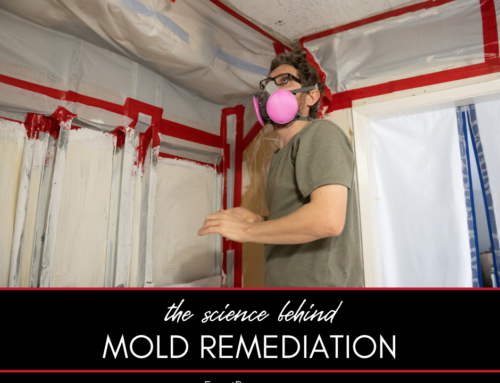In order for mold to grow and flourish it needs three key elements: a source of food, like nutrients from wood surfaces inside of your home, an ideal temperature of 70 degrees Fahrenheit—which is typical in a majority of homes, and moisture. Exposure to molds, over time, can cause health issues like coughing, congestion, asthma, and skin rash, as well as upper respiratory tract infections, lung irritation, and even memory loss, according to the CDC.
There are four types of orange mold that you should look out for, and each has a different appearance and level of toxicity.
Fuligo Septica
This mold can be found outside on wood mulch and rotting bark, and inhalation of its spores can cause an asthma attack if you’re asthmatic, as well as allergic reactions. Fuligo septica is sometimes referred to as “dog vomit slime” because of its chunky and slimy orange or yellow look. But as its supply of food or water is depleted, the mold’s appearance begins to resemble other kinds of molds.
Acremonium
Acremonium can be especially harmful to those who have compromised immune systems, and it may cause fungal maxillary sinusitis (a fungal infection in the sinuses), and infect the eyes and nails. It’s a mold that grows slower than others, and needs about five days to develop. As it ages it takes on a leathery look. Acremonium can not only appear orange, but it may be a pinkish or grey hue, too.
Orange Slime
Named after the way it looks, orange slime is also referred to as “sludge mold,” and is most commonly found on trees.
Aleuria Aurantia
Aleuria aurantia is sometimes called orange peel fungus because it looks like a piece of an orange peel and has a vivid orange pigment that makes it easily identifiable.
Do You Need a Disaster Remediation Expert in Washtenaw County or Jackson County?
If your home has already been damaged, we can help. Check out our services and call Exact Recon for your free disaster remediation quote today. We offer:
- Water damage restoration
- Mold removal and remediation
- Fire and smoke restoration
- Sewer cleanup and disinfecting
- Reconstruction
- Wind and storm damage repair










